Project Introduction
This project investigated how video games and advertising have been integrated over the years. The project was undertaken to discover new means of communicating with players and how games can integrate goals and messages within their design whilst still addressing the needs of a target audience.
To do this I researched advertising theory, existing advergames, product placement within games, communication theory, gamification in external industries, and games for education. These areas were selected for the overlapping core principle in each being effective communication.
This project was accompanied by a dissertation on the subject matter which targeted challenges in conventional advertising (televised, online, print) and broke down how advergames could be used as a solution to the challenges of these industries through video gaming's high engagement rates.
To achieve this project I created a faux client based upon real world equivalents. The client I created were an eco-charity named "Natural Alliance". A charity was chosen to show the versatility of advergames as a genre. Beyond showing this versatility, designing around a charity with a broad range of activity gave me additional opportunities to build my skills in goal driven game design and designing around audience requirements.
The project took the goals, work, and objectives of the client and integrated these within a design which also met the needs of the faux brand's established audience. This was bolstered by pre-visualisation art work on how brand imagery can be integrated within User Interface graphics and 3D game assets to diegetically create memory imprints of a brand during play.
Key considerations during the project were the avoidance of the issues audiences have with advertising today. These issues were at times prevalent within video games too. The main issues were interruptions to the user's online experience or gameplay breaking a flow state, an over prevalence of advertising and overbearing communications which slowed progression or distracted users, and users feeling forced to interact with a wider brand against to gain tangible progression in a game or online activity.
The project was delivered in a series of documents, pre-visualisation art pieces, and a pitch video recorded as though the project was being delivered to the client to show the value of advergames to an organisation.
The documents were a Game Design Document, Advertising Design Document, Visual Style Guide, Risk Assessment, and Design Change Log. These were chosen as they gave a comprehensive image of the final intended product whilst contextualising advertising theories present within play. The change log and risk assessment were included to highlight potential pitfalls that could poorly frame the client or be counter active to the success of the product.
Client Breakdown
The client for this project were a faux organisation named "Natural Alliance".
They were based on various global eco-charities found in the real world and mimicked the audiences, ambitions, goals, values, and work these groups had conducted.
I designed their branding and potential logos in line with advertising theory relating to the communication of an operational domain through imagery.
By basing the faux client on existing organisations I was able to emulate working for a real client and removed any ability for me to cherry pick audiences or objectives to reduce the challenge of the project.
The target audience for the advergame were primarily western millennials and generation-z members. This gave me a working age range of 20-40 years of age as a core group to target the game towards.
This helped me frame the design and advertising tactics within play in a way that would appeal to this group the most and maximise the efficiency of the final product if it were to go into full development.
The client's main goals were to dismantle unsustainable infrastructure, create eco-friendly sustainable alternatives, educate the public on global climate damage and ecological disasters, and to help undo the damages the ecosystems on earth had already endured.
These were the key goals communicated in the design and visuals of the project. The client's work was also gamified and included in the design.
This was primarily showcasing the initiates they would have undertaken around the globe and giving players an insight into what they do, and why it is necessary they do it.


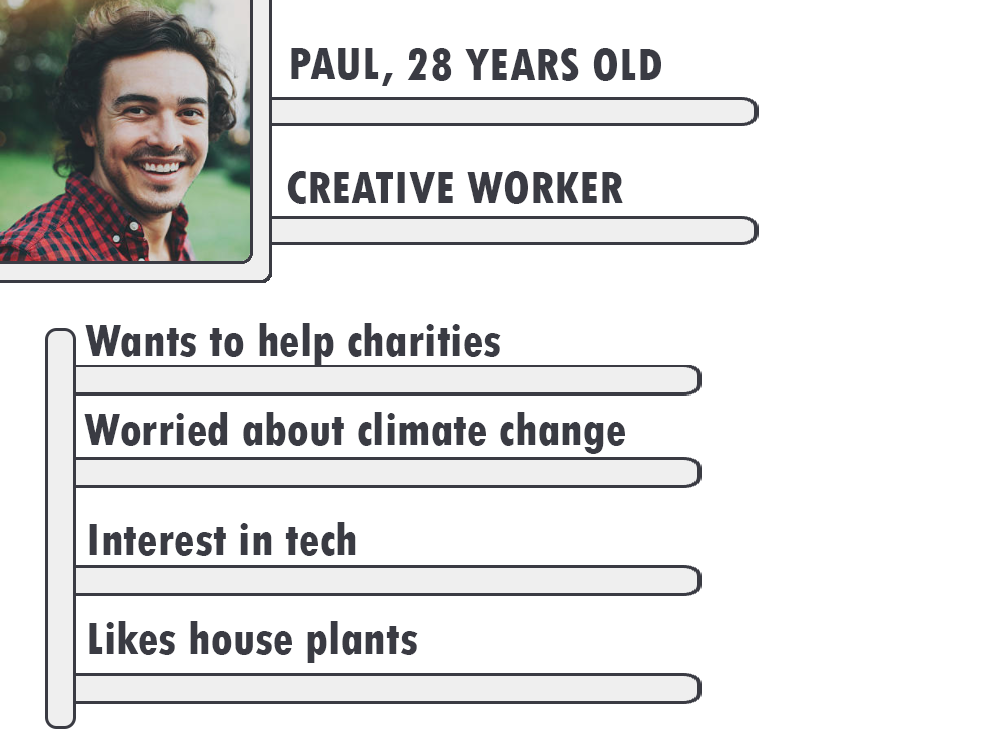


Project Breakdown
Entering the design of the game I kept in mind a series of core beliefs that had to be persistent throughout all aspects of the game.
These were positive player reinforcement, highlighting client goals and work through play, no fail states within play, the encouragement of cooperation between players, and the integration of the wider client brand.
Within these beliefs I also designed in a way that kept the advergame in line with advertising theory.
This meant that I also had to account for issues such as interruptive advertising methods in play, cognitive overload, and how the game framed the client and if the mechanics and systems I designed could be misconstrued.
Before design began I addressed who the audience were, what their understanding of gaming and gaming platforms were, their access to the software and hardware required for play, and what game genres the audience enjoyed that also allowed for optimal client representation in play.
I researched the audience further and broke down many overlapping elements present within this base into user stories to work from moving forward.
After these considerations I concluded that creating a light arcade management title, delivered on mobile and tablet, worked effectively with these restrictions.
The genre is popular and widely played by many demographics (as can be seen with these mechanics present in titles such as "Clash of Clans", "Star Wars Commander", and "Fallout: Shelter") which gave a degree of insurance to the audience being able to engage with the proposed title.
Beyond this, delivering the title on mobile platforms maximised the target audience's access to the title whilst ensuring they would be capable of downloading the game via their phone's application store in the same way as any other application.
Designing For Brand Communication
As communication of brand goals, values, and work were the three most important aspects of gameplay, these were the core drivers in each area of the design.
All of these areas were based upon the design pillars which can be seen in the adjacent image.
I began by breaking down what those values and goals were. I decided that based upon the faux history of the client that their goals were to highlight the power of cooperation in grass roots organisations, to raise awareness of environmental issues (their causes and solutions), and to showcase their value as an organisation in terms of the work they do to combat environmental damage.
The highlighted work from the faux client which I showcased was segmented into their four dominant campaigns.
These were work to fight damage to the Arctic, deforestation in the Amazon, pollution within the Pacific, and the destruction of the Great Barrier Reef.
I wanted to ensure clarity within every message that communicated the above points.
To do this I separated the gameplay into two key phases. These were a building phase and a mission phase.

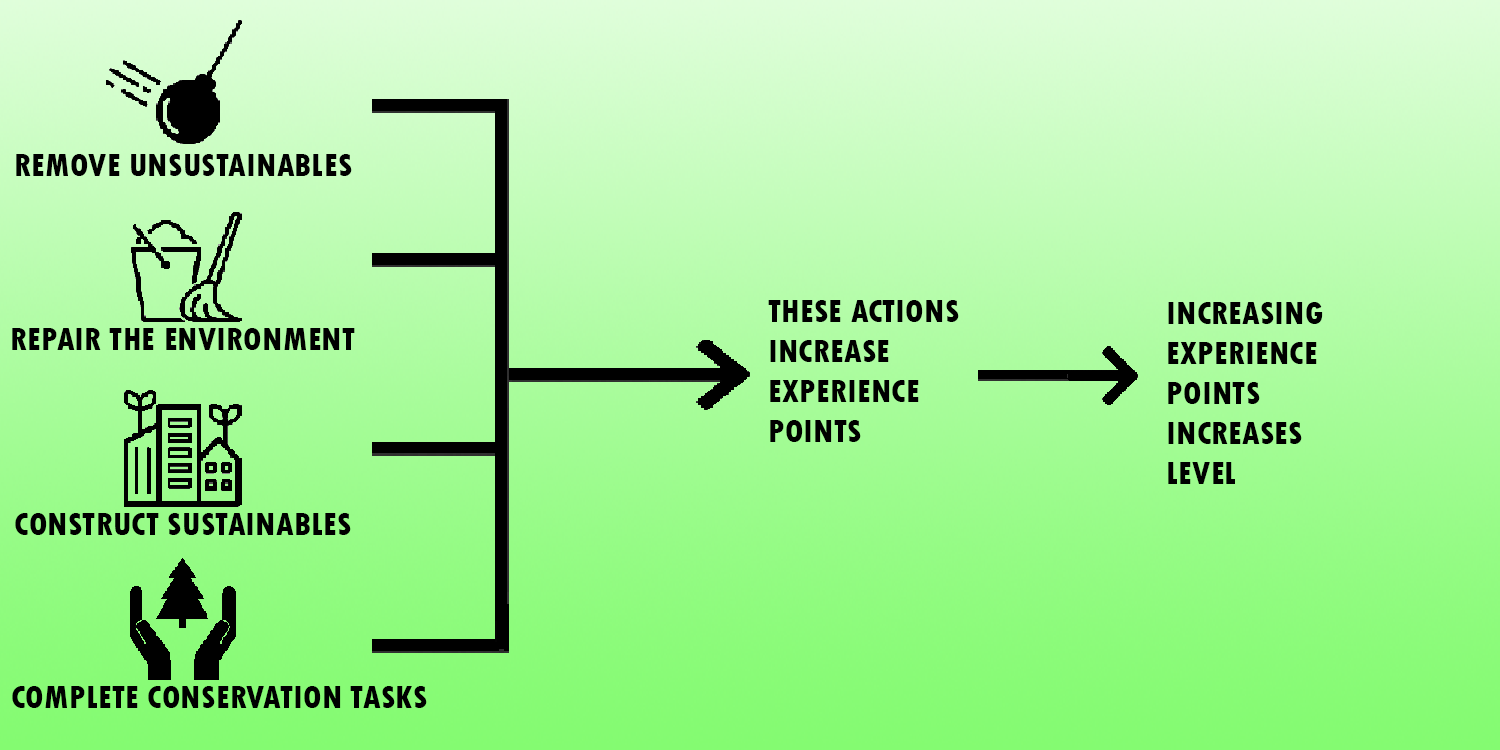
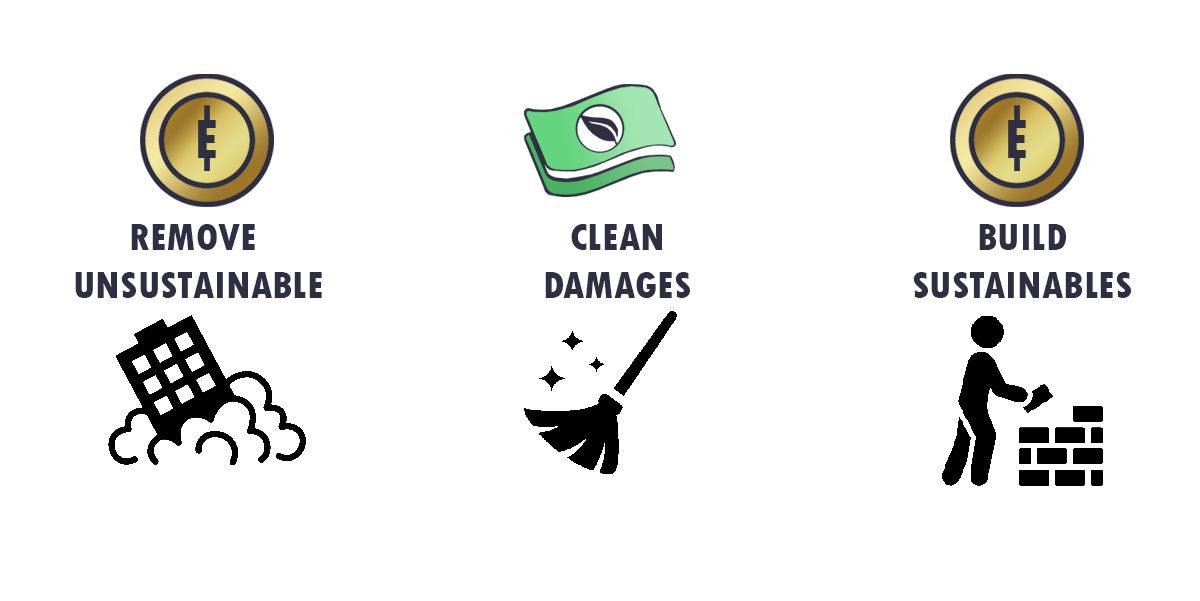
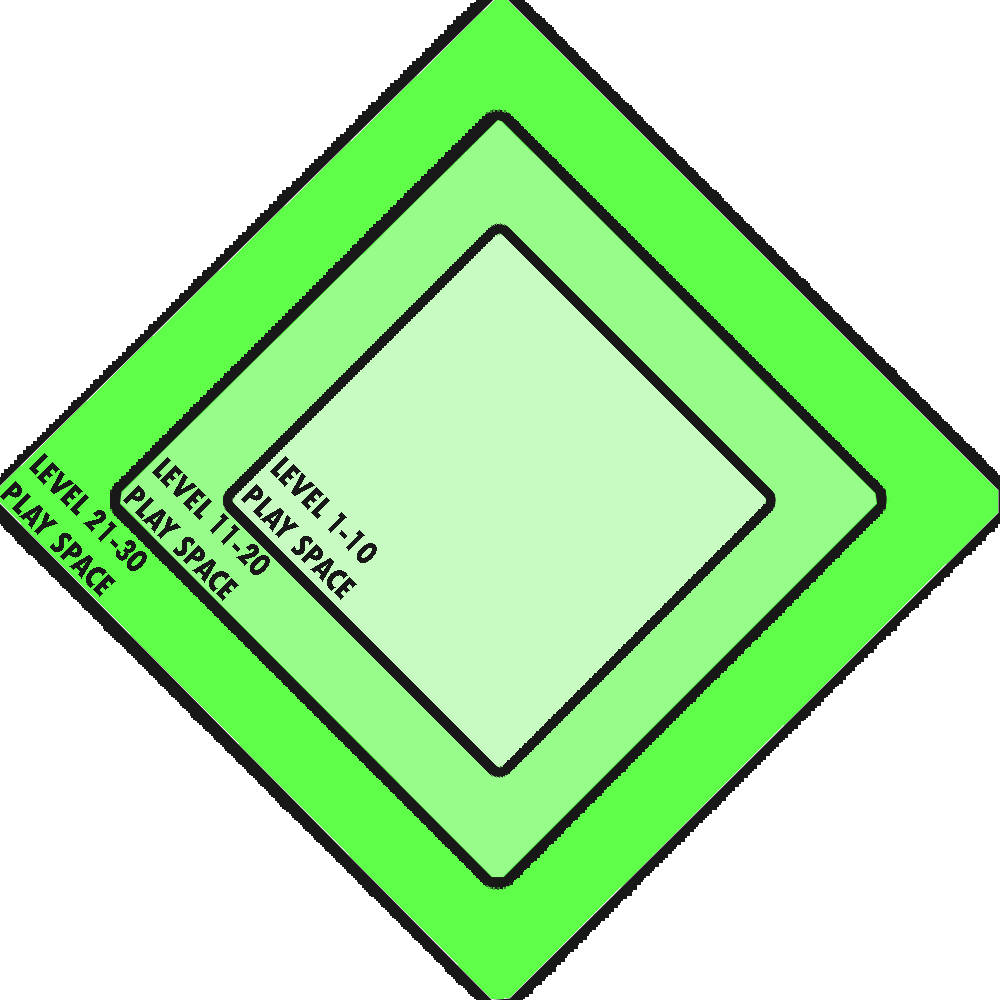
The Build Phase
The building phase tasked players with creating, expanding, upgrading, and managing a sustainable society.
The building phase worked like Clash of Clans' construction screen but with no combat involved. It was a grid of unmarked tiles upon which players could build.
They did this by using resources they were allocated during the tutorial period as a start up fund to create sustainable structures which would generate the resources required to expand and construct more sustainable structures.
These resources were two in game currencies. These currencies were E-Coins which were earned in the build phase, and Sustain-a-bills which were earned in the mission phase.
These structures were a series of real-world green alternative infrastructure installations which had relevant game play benefits linked to them.
By attaching a financial system to them for progression I gamified the challenges the faux client was facing when trying to create support for these structures outside of the game; whilst also educating the player base upon the variety of green alternatives and their purposes.
Expansion was metered by player level too. Levelling up expanded the area in which players could build within to allow for variation and repetition at the player's desire within their own game.
Levelling also gave players goals to hit in game as they could preview all items unlocked and their benefits if they continued playing, gaining experience, and levelling up.
To gamify challenges faced by the faux client that went beyond finances, players had to expend resources on removing unsustainable structures and their associated damages from the build screen.
These structures would spawn in each time the player logged into the game and cause damage to adjacent tiles if left unchecked.
This showed the un-ending expansion of industries which were damaging to the environment and drove players to dislike them as they were framed as an in game villain and nuisance to the player.
The negative emotions attached to these structures would be carried out of the game in the mind of the player to meet the client's objectives of generating disapproval for the real-world equivalents.
The Mission Phase
The mission phase was a showcasing of the client work. This phase was accessed by swiping out of the build screen into 4 adjacent screens. These were accessed by swiping from one side of the screen to the other, depending on the direction swiped would determine the mission screen which the player was moved into. The four screens were the Arctic, the Amazon Rainforest, the Pacific Ocean, and the Great Barrier Reef.
Each screen contained minigames which were contextual to their environment and the work the client undertook there in the real-world to combat ecological damage.
These games ranged through cleaning up plastic in the ocean, reforesting the Amazon, and blocking oil rigs from setting up within the Arctic by sketching out conservation zones.
All of these games rewarded the player with a currency required within the build screen but only attainable through these activities. This drove players to engage with all areas of play and ensured players were exposed to all client activities, objectives, and messages.
Positive Reinforcement
Positive reinforcement was a core factor within driving return play sessions and associating the client with positive experiences in play.
Players associate the emotions experienced during play with the imagery and messages present during play. By keeping client logos imbedded within the screen at all times in a non invasive fashion and having all activities linked to the client, the positive feelings generated from rewards and success confirmation would be tied to the client in the minds on players.
Positive reinforcement came in the form of regular rewards, UI experience gain pop ups, and a continual visualisation of player's level progress.
Designing For Lifespan
Longevity of the title was a particular area of focus. Often advergames are designed for a viral launch and short life cycle. I aimed to design the title in a way that content could be modularly updated and expanded upon and used staggered reward timings to keep players coming back for more.
These rewards were delivered through level up rewards and daily, weekly, and monthly engagement challenges and log in bonusses.
Players would receive a reward of game currencies and new available structures or upgrades to existing structures when levelling up. They would also be rewarded for every day they logged in, full week of consecutive days they logged in, and full month of consecutive days they logged in. On every new day, week, and month, players would receive their challenges for that day, week and month too. Completing all the challenges within this set would offer large rewards.
The guarantee of continual rewards through increasing levels of engagement was a driving factor behind creating repeated sessions of play. With each session players would be exposed to client imagery and through this have more positive memories of the client created in their mind.
To keep the game experience fresh over time to keep players interested the design utilised player data as a tailoring tool. The missions present within the Mission Phase used played data to determine which issues each player cared about most, and then spawned related mission more often to those players. For example, if players linked their social media accounts to the game and regularly interacted with content related to rainforest conservation they would see more missions focussed on this issue within the Mission Phase.
This individual player experience was designed to draw each player's view of the client in line with their own areas of concern and in doing so the player would see the client as a like minded and caring group.
Anti-invasive Visual Advertising in Play
One of the key issues in modern advertising I aimed to avoid in the design and pre-visualisation of the title was intrusive, overly attention grabbing, or interruptive advertising visuals.
This extended beyond pop-up adverts or interruptions to play.
It is an issue which can be present even when brand imagery or visual advertisements are placed within non-contextual environments.
Despite this, brand imagery must be present to create mental links between the enjoyment of the game and the client brand.
To achieve this successfully I embedded as many variations of the client imagery and logos into as many non-invasive and contextually appropriate assets and locations as possible.
I created asset lists and considered within each new asset if advertising was appropriate within its texture or mesh.
For example, to use empty game tiles as a position to advertise the client would be too forceful and irritate users.
However, to work client logos within the sustainable assets and create positions within the mesh to highlight these further; would be contextual and accepted.
I pre-visualised 3D assets that would incorporate this idea.
Each asset was modelled for the game camera angle and for maximised brand image integration during texturing to keep client logos in the player eye at all times.
During texturing I considered how prominent a logo would be within each asset. Based on research into advertising I was aware that as long as the viewer could subconsciously identify a resemblance of the logo then they would remember its presence within the game.
Any memory created in this way would create a mental imprint of the client on the player.
User Interface Imagery Integration
Moving beyond 3D assets, I worked client imagery, logos, and branding within the user interface concepts.
By integrating these visuals into the UI it would guarantee users would see and interact with the client imagery as the UI was required to play the game and users would continually scan for this.
I again opted to include this imagery in non-invasive ways as much as I could whilst making it identifiable to players for increased brand recollection post-play.
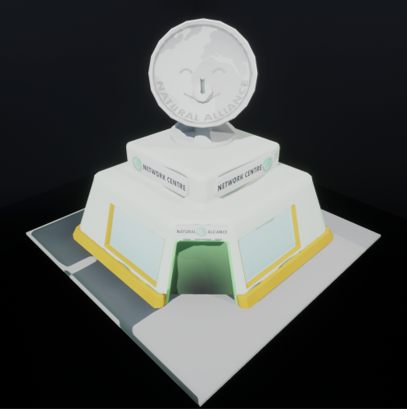
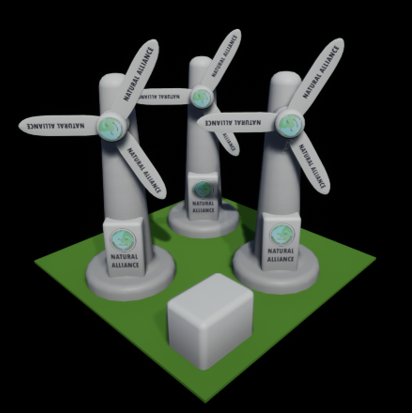
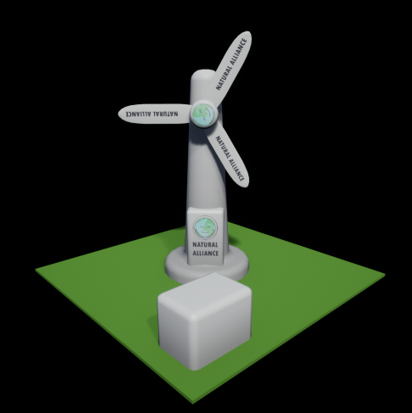
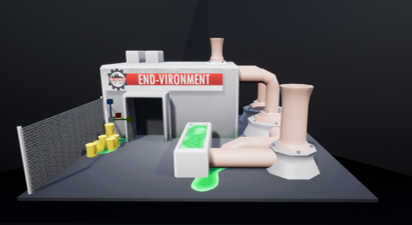
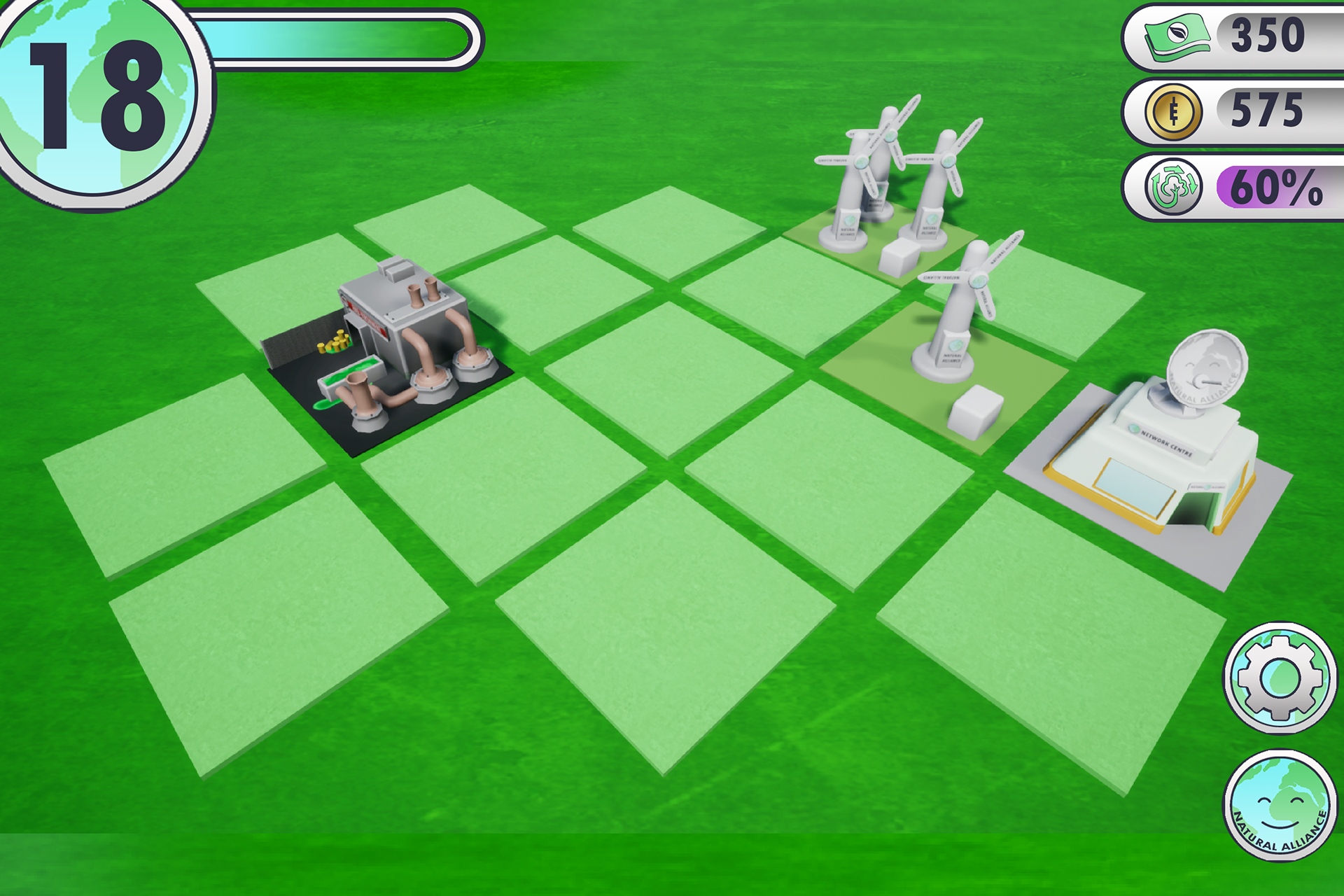

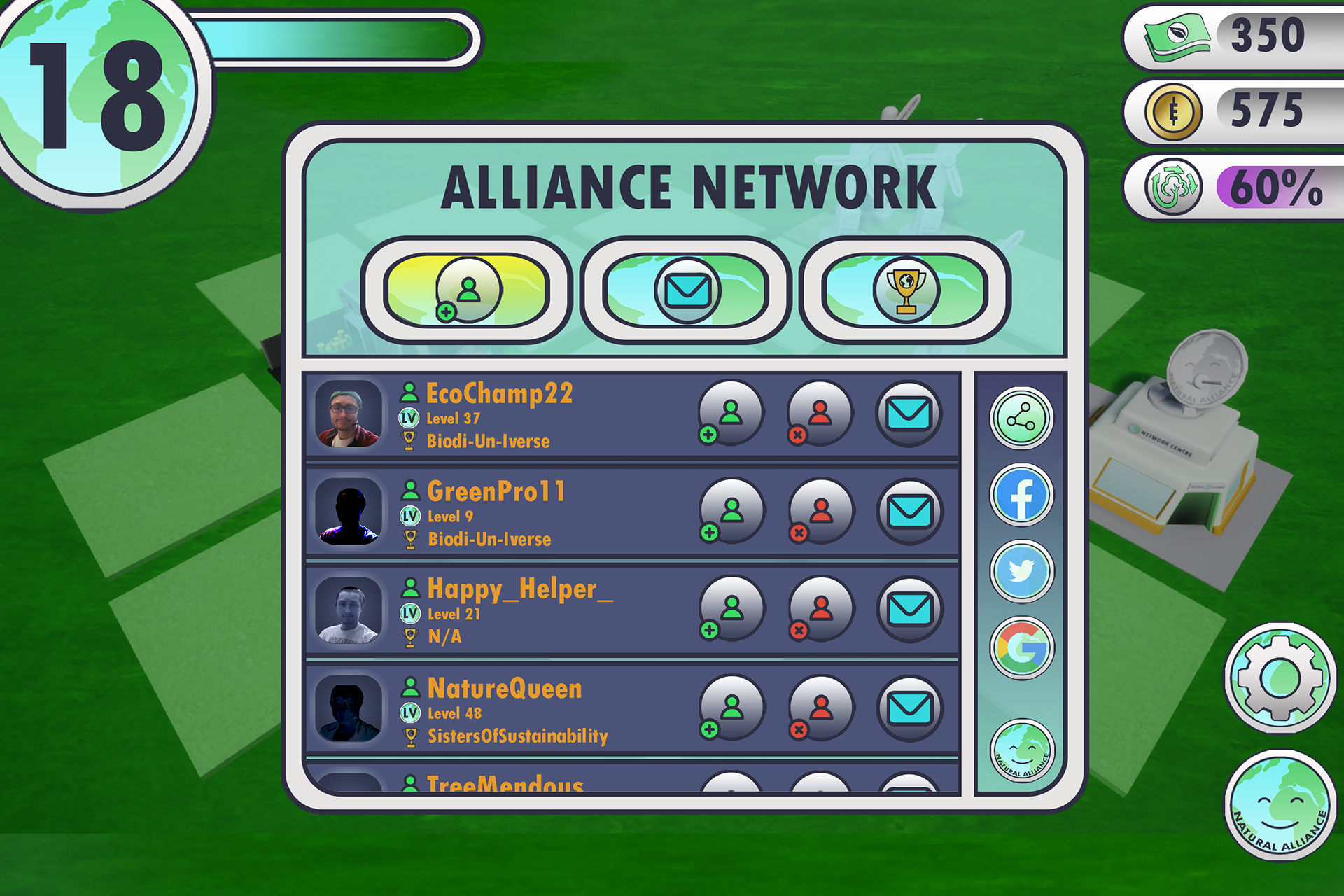

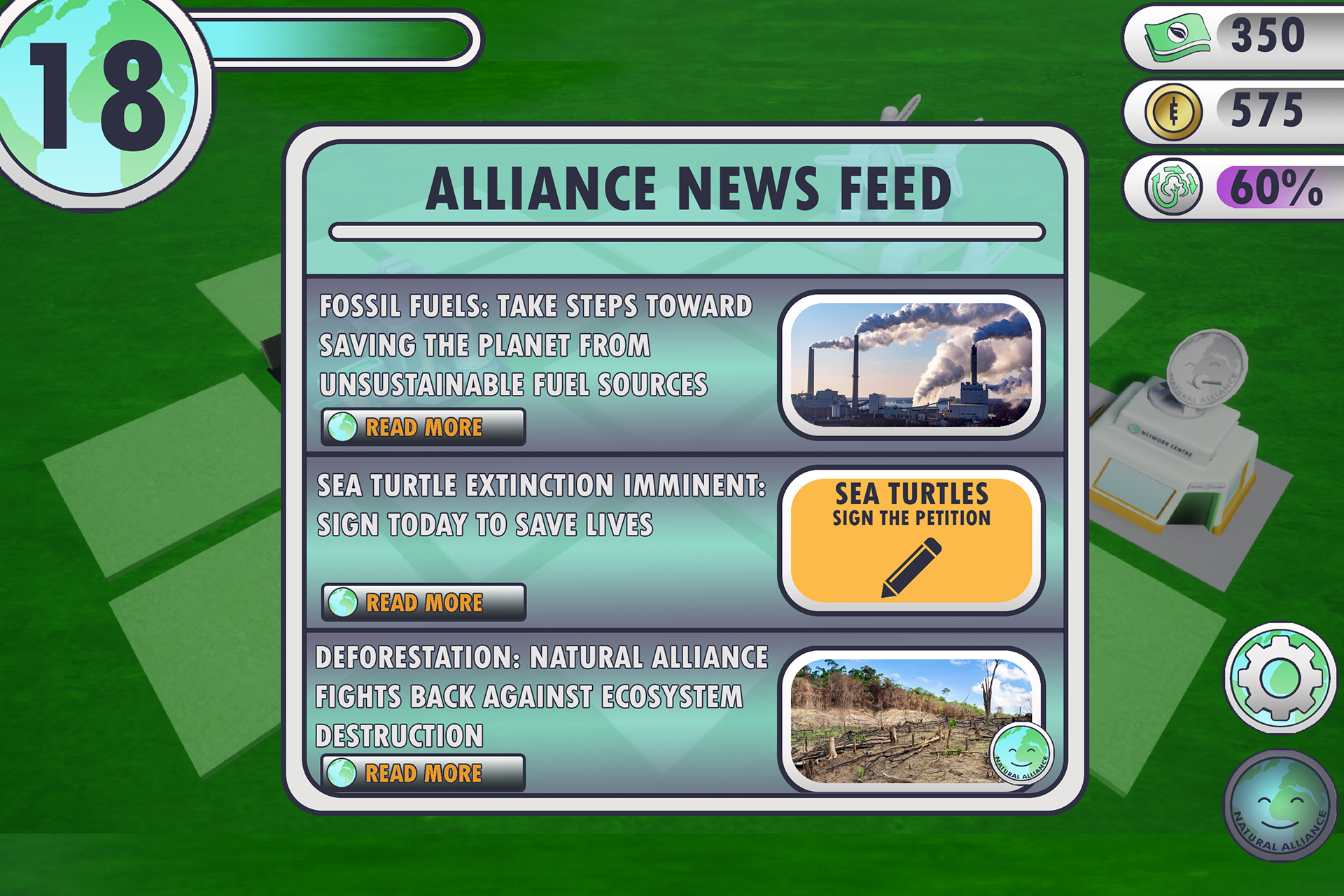
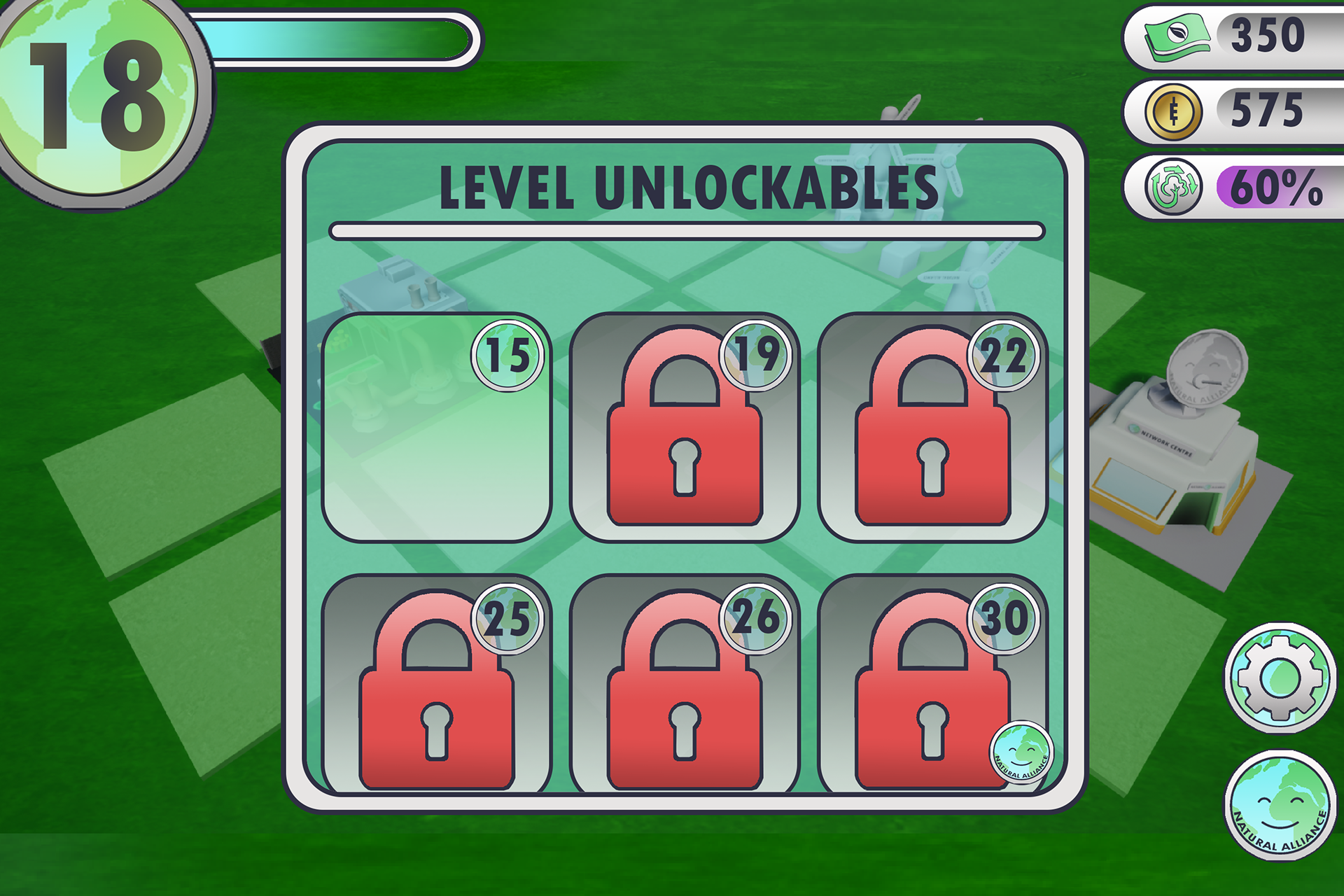
Pitching
The final stage of this project was to collect all the work which would be relevant to the client and collate it into a pitch which would sell the idea of an advergame to them.
This removed much of the development documentation and presented the core design and advertising ideology in a format which was digestible by a lay audience.
For the pitch I recorded the entire presentation as a one hour, one take video. The purpose of the one take was to emulate a presentation within a video call or board room environment where editing or second attempts would not be available.
Below is the full final pitch video.